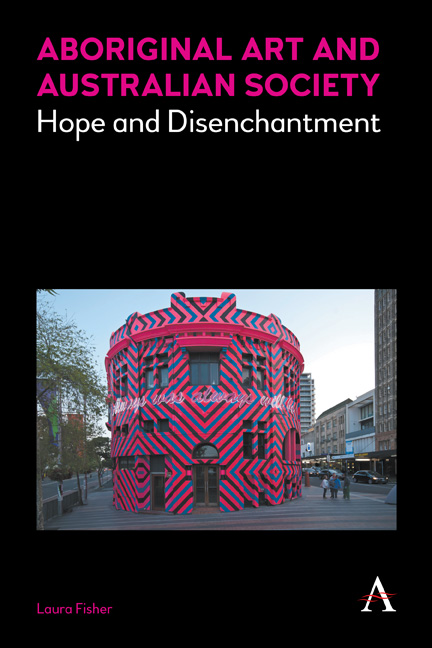Summary
Three Ethical Projects Underpinning the Aboriginal Art Phenomenon
This book has its origins in a kind of crisis of interpretation that I experienced as a university student in the early 2000s, at which time my aesthetic sensibilities – which had drawn me to Aboriginal painting – were challenged by a new ethical sensibility that arose from my studies of various histories of colonisation and Indigenous social justice. I found myself looking at Aboriginal art in a compulsively reflexive way, trying to pick apart the foundations of my aesthetic judgments and asking what bearing the settler state context had on my interpretations. This book has been an attempt to come to terms with the fluidity of Aboriginal art's meanings, as it moves between the artists and their publics, between contemporary art spaces and the commercial sphere of touristic consumption, between local Indigenous domains and the noise of national visual culture. I am of course not alone in having been preoccupied with this problem, nor do I think my arguments necessarily chart new territory beyond the array of enlightening vantage points that other scholars of Aboriginal art have brought to bear on this problem. My priority has been to provide an empirical footing for understanding how the political relationship of Indigenous and non-Indigenous Australians underpins Aboriginal art's many valencies and to focus attention on the way fine arts has contended with the extra-aesthetic forces that make Aboriginal art such a unique entity.
In bringing this book to a close, I wish first to summarise the ethical problems that have been part of its analysis and which can be loosely divided into three categories. The first relates to the idea of redemptive nationhood. Not only has Aboriginal art been viewed as a platform for oppressed people to find a voice where they have otherwise been silenced, it has been viewed as something that can substantiate the worth of Aboriginal people in Australian society and stimulate sympathy for Aboriginal people's circumstances. We have seen these presumptions framed in nationalistic terms, such that the character of the nation and all of its citizenry can be ennobled through the redemptive process.
- Type
- Chapter
- Information
- Aboriginal Art and Australian SocietyHope and Disenchantment, pp. 173 - 184Publisher: Anthem PressPrint publication year: 2016

